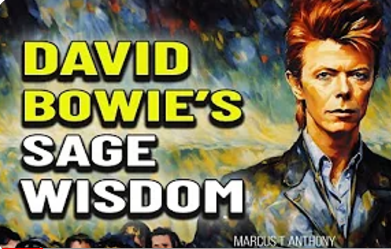This post is taken from my online Power and Presence Course. It is part of Session 5 (there are ten sessions in the course). You will find the video on my Power and Presence YouTube channel.
We may be entering the age of virtual realities, but it would be naïve to simply believe that we can leave nature behind and expect that our sense of wellbeing will be preserved. If you’ve ever felt restored by spending time in nature, or conversely, depleted because you found yourself being shuffled into constructed urban, spaces, you are not alone. For much research suggests that the human mind is not at all at ease with artificial environments, with their sharp lines and textures and their culture of endless busy-ness. Urban settings tend to create a stimuli mismatch, because humans have evolved to process the sights and sounds of the natural world. Artificial environments can deplete our limited mental resources, leaving us feeling anxious, fatigued and distracted.
Notably, today’s humans are spending less and less time per week outdoors, with a seven percent decrease in the past two decades. Sixty percent or more of American adults now spend five hours or less in nature a week. Further, children do less outdoor recreation, with only 26 percent of mothers reporting that their kids play outside every day. Perhaps most notably, 50 percent of the human species now live in cities, and that is set to rise to 70 percent by 2050.
Meanwhile, other research suggests that time spent in nature enhances a positive, empowered relationship with the future. This “nature effect” works to some degree even with electronic images, and therefore can be harnessed within virtual environments. A fascinating fact is that experimental evidence shows that both children and adults are more likely to restrain their desire to satisfy impulses after watching nature videos, as opposed to videos about cities. Conversely, urban settings may prime us to feel competitive and to take what’s available; while nature inspires a sense of abundance and permanence. Nature also reduces stress, increases our capacity to focus, and induces a more expansive sense of time and a generous attitude toward the future. According to Dacher Keltner , Professor of Psychology at the University of California, Berkley , nature inspires awe, and enhances creativity while helping to generate new perspectives. Conversely, small screens literally retard our expansive vision, as well as our capacity for wonder and creativity.
Preferable futures such as what I call the Web of Wisdom would see homes, schools and workplaces designed as cognitively friendly spaces, attuned to nature. For example, nature’s fractal mathematical patterns enhance wellbeing, and design spaces could mirror those patterns. Yet we should keep in mind that we don’t need to wait for Big Tech and our administrative overlords to change our online systems before we act. We can also modify our own behavior and lifestyles to take advantage of the nature effect. For example, research suggests that exposure to natural light during the day helps us sleep better, and makes us feel more energetic and physically active. Google reports that workers with desks near windows are more creative and productive than those farther away. We can all consider implementing these kinds of simple behaviors as we go about our life and work.
Peripheral vision
As I previously suggested, a commonly overlooked problem is the importance of using our peripheral vision in this era where we spend more time in e-worlds, increasingly accessed via smartphones with screens that may be only three inches wide. This is particularly relevant to online learning (either formal or informal). Interacting with small screens restricts our peripheral vision, and in doing so retards our mental capacity to spatially relate to information.
Experimental evidence shows that as we activate our peripheral vision, using our eyes to rest upon expansive , panorama-like spaces and landscapes, we simultaneously permit access to greater knowledge and insight, because the physical process facilitates our sense of context. Our working memory is improved, along with our efficiency at locating information. Using our peripheral vision also enhances our spatial memory: our ability to remember where things are.
This is where virtual futures could actually come into play in a positive way. Robert Ball of Weber State University in Utah believes that we can reduce this peripheral vision constriction by utilizing giant, high-resolution visual displays. These could potentially help facilitate physical embodiment and augment creativity and pattern recognition. Large or multiple displays offer enough space to arrange information across a wider plane, and permit leverage of spatial memory. Ball has found that as large display sizes increase, there is also a reduction in the need for virtual navigation, and the latter increases the time and mental resources required to complete a task.
Ball thus suggests that instead of investing money into purchasing faster processors, we should instead buy bigger monitors. Likewise, the metaverse concept may therefore be ideal to leverage the advantages of activating our peripheral vision, by developing a three-dimensional, all-surround perceptual field. But we first need to develop better hardware and software, with pixilation that approximates natural vision. Current VR headsets tend to do this rather poorly.
The obvious problem here is the expense. Big screens and big VR spaces cost big money. For example, one Malaysian academic I spoke to at an international conference shared some very impressive images of classrooms at his university, where they use a hybrid teaching system (part online, part offline). The front wall of the classroom featured three huge screens placed side by side, effectively forming a panoramic visage which displayed teaching materials, images and the faces of students and professors involved in the class. I asked him how much it cost to set up such a single classroom, and the professor told me it was twenty-five thousand American dollars.
Read Power and Presence, the book.
Marcus






